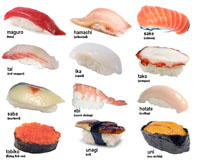85 12.4 Biological Resources
Seafood (fish, crustaceans, and mollusks) is perhaps the most valuable biological resource. An estimated 86.6 million tons/yr., or 170,000 million pounds, of seafood are harvested around the world each year. Most seafood is harvested from temperate latitudes.
Seafood consumption has been gradually increasing worldwide, meanwhile fish and other seafood supplies have been diminishing, largely due to overfishing in poor, developing regions of the world. China alone consumes about 1/3 of all seafood harvested each year.
Aquaculture is gradually replacing traditional “capture” deep sea fishing. In the early 1970s only about 1 percent of seafood came from fish farms (aquaculture). Today, many kinds of seafood are farm raised – most abundant are freshwater-trout, catfish, and crayfish, but marine aquaculture is increasing, primarily salmon, oysters, mussels, shrimp, crabs, lobster, and other crustaceans. Aquaculture now account for more than 80% of the seafood in China, and nearly about 30% consumed by the rest of the world. Most varieties of commercial fish are now farm raised or captured in a managed and (hopefully) sustainable manner (Figure 12.4.1). Capture fishing has become increasingly infeasible in many parts of the world where many ocean fish stocks have been depleted. Traditional hook-and-net style fishing has many environmental problems. Drag nets scour the seafloor, destroying benthic communities, and large nets capture and kill unintended sea creatures including sea turtles, marine mammals, and many other endangered species. Lost nets, fishing lines, and trash from fishing ships are a major source of trash in marine pollution. Many advances are being made in marine aquaculture, however, it too can have environmental consequences including generating large quantities of fish wastes, interfering with native species populations (including spreading diseases), and taking space away from natural benthic communities.
 |
|
| Figure 12.4.1 Most sushi prepared in the United States are from farm-raise species. |
Commercial whaling in the 19th and 20th centuries had a devastating impact on many marine mammal species. Whales were harvested for meat, oil, and for fertilizer. Whaling operations peaked in the 1950-60’s with approximately 60,000 whales a year. As a result, whale populations crashed. 8 out of 11 species are now considered “commercially extinct.” Whale population estimates are that 4.4 million commercial whales were in the world resource population in 1900, but only about 1 million are estimated to exist today. Large-scale commercial whaling operations ceased in 1987 worldwide with exception of small operations still being conducted by Japan, Norway, and some coastal North American tribes.
Marine plants are being farm raised for food and other purposes. For example, extracts from kelp is used as a clarifier in beer and to form emulsions in salad dressings, inks and paints.
From Miracosta College, is shared under a not declared license and was authored, remixed, and/or curated by LibreTexts. Download this book for free at https://geo.libretexts.org/Bookshelves/Oceanography/Oceanography_101_(Miracosta)

